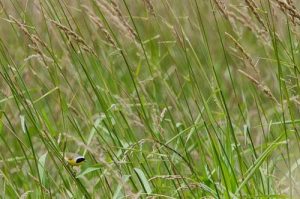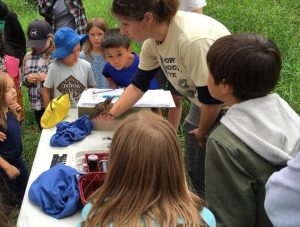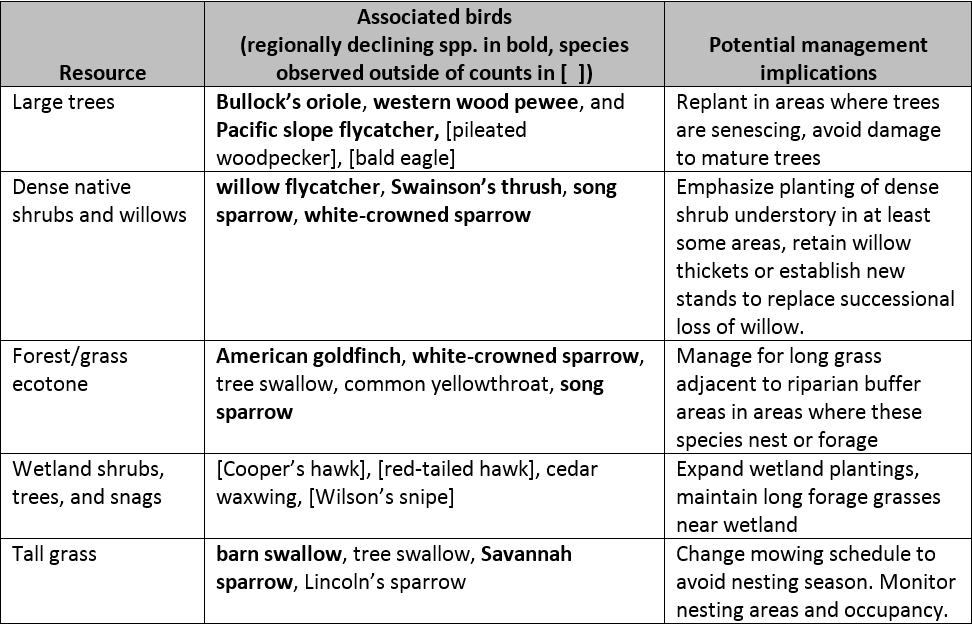Bird diversity, resource use, and nesting success in restored and unrestored riparian buffers
With financial support from Conservation Research and Education Opportunities International, Oxbow conducted a study in 2016 to ascertain bird diversity and habitat use on our agricultural and forest land. Between April and August, researchers observed 78 species across our 230-acre property.

We discovered that nesting success of common species was in the normal range, and also learned that several birds with declining regional populations, including Savannah sparrows, use or nest in farm field-edge grasses. The findings led us to revise our tall grass mowing schedule to avoid damaging the birds’ summer nesting habitat. Although we don’t yet have data collected, we suspect that protecting the birds may benefit the farm with increased pest reduction.
The upland forested area included several birds of particular conservation interest (Swainson’s thrush, Wilson’s warbler, and Pacific wren). The three species are declining regionally and much of their global population is centered in the Pacific Northwest. Protecting their upland habitat and improving semi-natural lowland habitat will be a priority for Oxbow.
In partnership with the Puget Sound Bird Observatory, we will continue to add to our data set to build an understanding of temporal trends as restoration work continues.

Beyond using the data to inform land use and restoration decisions, Oxbow’s environmental education team took advantage of the study to develop new kid-friendly programming. While educating kids about bird biology, a new educational module, Calling All Birds!, introduces early learners to complex concepts in ecology, including habitat, adaptation, and ecological niche. We piloted Calling All Birds! with our 2016 summer campers and subsequently adapted the lesson for in-class use.
Contact Matt Distler for more information.

